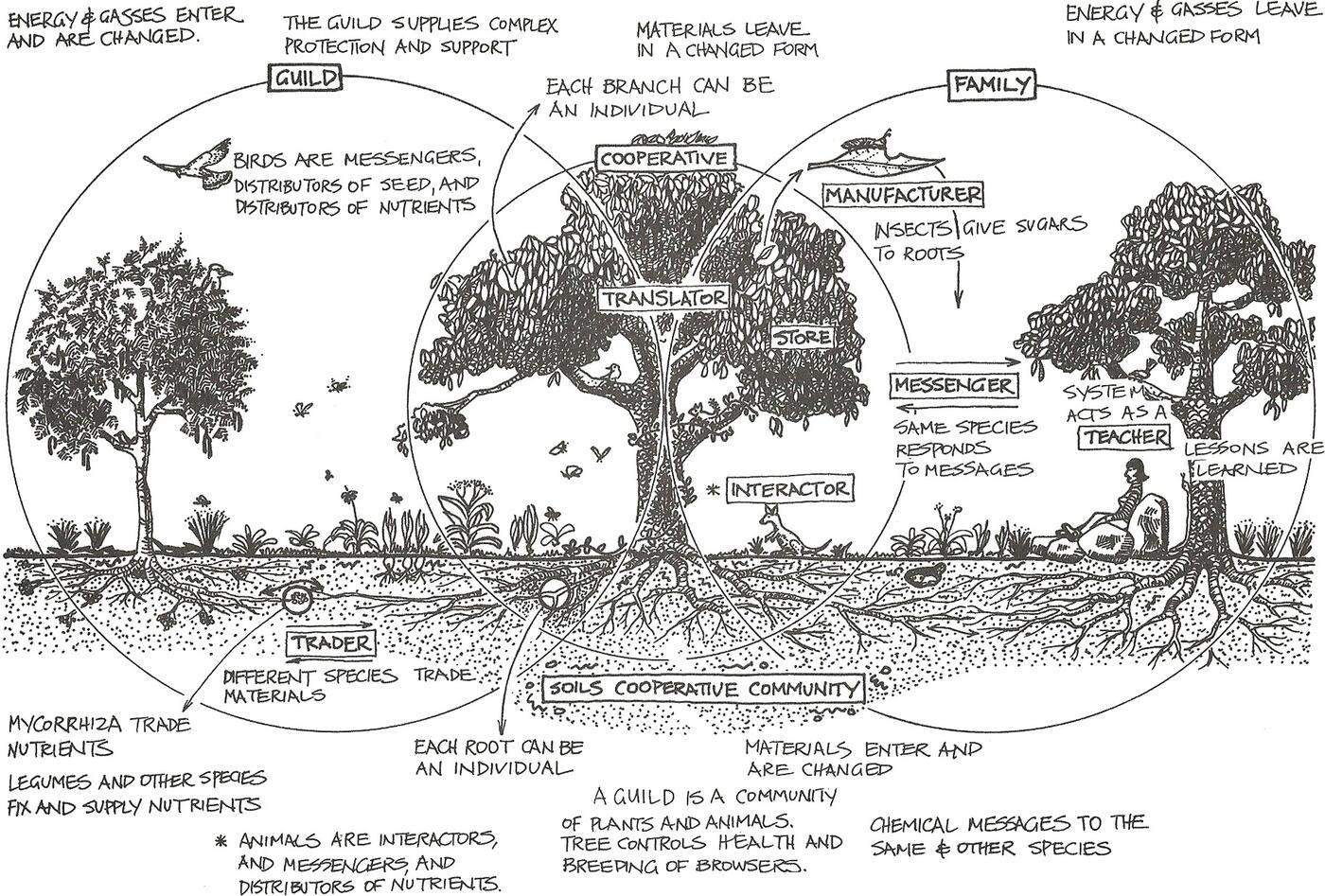A semi-open database for plants and trees.
Inside a forest, plants and trees can communicate with each other - and even share resources - through mycorrhizal networks. Sadly, many of these networks have been disrupted or destroyed by our presence on this planet.
Reconnection
The dream of ForestBrain is to extend those mycorrhizal networks through the internet and through our social networks, so valuable information and resources can flow between forests again. We do this by collecting forest data and connecting various data sources together.
The goal: to preserve, propagate and protect vulnerable species and habitats, produce the things we rely on for our survival and prosper together with (and as part of) nature.

How does it work?
ForestBrain is intended to be used by organizations. Organizations need to apply for a membership first. As a member, you can share or exchange existing data with ForestBrain, and enter new data directly.
Get involved
If you want to contribute to the propagation, preservation and protection of forests, you can become a member of ForestBrain.
Become a member
 Rooted in the Philippines
Let's all fight to preserve its beauty and biodiversity!
Rooted in the Philippines
Let's all fight to preserve its beauty and biodiversity!
Connect
 Open source software
If you want to set up your own ForestBrain, you can!
Open source software
If you want to set up your own ForestBrain, you can!
Source code
 Still a little seedling
If you want to help it grow, please register as a member!
Still a little seedling
If you want to help it grow, please register as a member!
Get involvedWhat kind of data?
The database is still young, but some examples of what's being collected already:
- A list of Philippine Food Forests
- A list of native Mother Trees in Mindanao
- A list of collected seeds
- Plants and design elements for permaculture projects
The data contains taxonomy, geo location, origins (seed or source), forest details, plant details and contact information.
| Component | Inputs | Outputs | Stage | Zone |
|---|---|---|---|---|
| Hydro turbine | Water pressure | Electricity | Incoming | 1 |
| Water tank | Collected rainwater |
Water Water pressure |
Doing | 1 |
| Compost toilet |
Humanure Humanurine Sawdust |
Compost | Accepted | 2 |
| Small hut |
Electricity Sweat |
Collected rainwater Kitchen waste |
Doing | 1 |
| Duck pond |
Water BSF larvae |
Poop Eggs Joy |
Review | 3 |
Permaculture
ForestBrain data is also useful in permaculture projects. And the other way around: the permaculture principles make sense in ecosystem preservation and restoration projects too. So in addition to the regular forest data, there are a few options available for working with permaculture data.
You can add permaculture design components, their inputs and outputs, imported resources, existing site features and zoning information.
Data collection
There are a number of ways to collect data:
- ForestBrain provides an interface for data entry
- Data can be submitted through webforms
- Data can be collected via ODK-based mobile apps
- Data can be imported programmatically
Each method can be customized to fit the needs and workflow of your organization.
For developers
The data is accessible through an open source CMS (MODX). There are building blocks available for displaying the data in the browser. Display options include a map view, grid view and tables. These blocks can be used as a starting point for presenting your data online.
It's also possible to expose the data through an API, so you can use it in your web or mobile app through REST or GraphQL. This has not been thoroughly tested yet, so be prepared to be the guinea pig.
Why?
The motivation behind ForestBrainHumankind has not woven the web of life. We are but one thread within it. Whatever we do to the web, we do to ourselves. All things are bound together. All things connect.